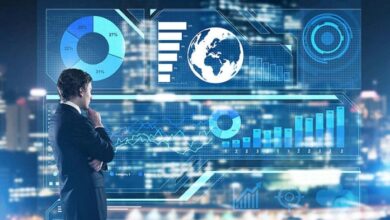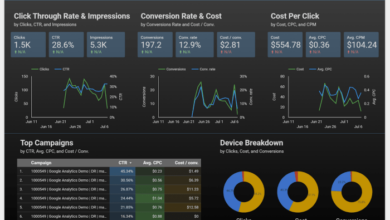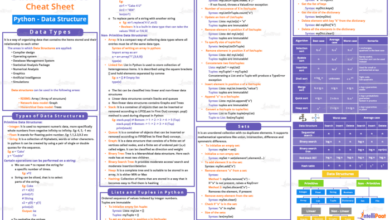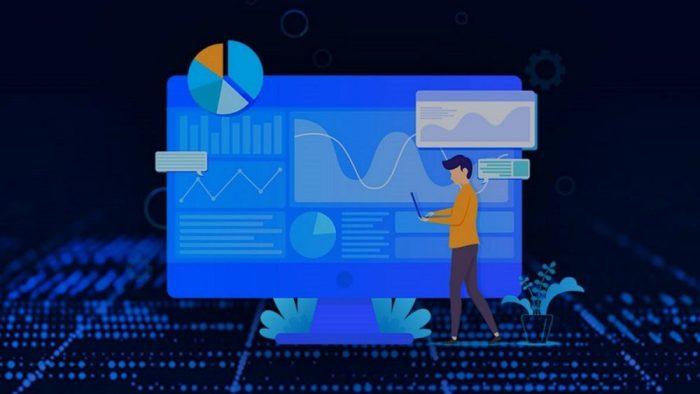
Big Data Master Class Bundle: Your Path to Data Expertise
The Big Data Master Class Bundle is your gateway to unlocking the power of data. This comprehensive program dives deep into the world of big data, exploring everything from its fundamental concepts to its transformative applications across industries. Prepare to unravel the secrets of data analysis, learn the latest technologies, and gain the skills you need to thrive in the rapidly evolving data landscape.
Whether you’re a seasoned professional looking to enhance your skillset or a curious individual eager to understand the power of data, this bundle has something for everyone. From the intricacies of big data analytics techniques to the exciting career opportunities that await, the Big Data Master Class Bundle provides a complete and engaging learning experience.
What is Big Data?
In today’s digital age, data is being generated at an unprecedented rate. This massive amount of data, often referred to as “big data,” has become a valuable asset for businesses, organizations, and individuals alike. Understanding big data, its characteristics, and its implications is crucial for navigating the information-driven world we live in.
Definition and Characteristics of Big Data
Big data refers to extremely large and complex datasets that are difficult to process using traditional data processing tools. These datasets are characterized by four key attributes, often referred to as the “four Vs”:
- Volume:Big data datasets are characterized by their sheer size, often measured in petabytes (PB) or even exabytes (EB). This massive volume makes it challenging to store, manage, and analyze the data using conventional methods.
- Velocity:Big data is generated at a rapid pace, often in real-time. This high velocity requires efficient data processing and analysis systems to extract meaningful insights from the data stream.
- Variety:Big data comes in diverse formats, including structured data (e.g., databases), semi-structured data (e.g., log files), and unstructured data (e.g., text, images, videos). This variety presents challenges for data integration and analysis.
- Veracity:Big data can be noisy, inconsistent, and unreliable. This aspect of veracity requires data cleaning and validation techniques to ensure data quality and accuracy for analysis.
Importance of Big Data in Today’s World
Big data has become an indispensable resource in today’s data-driven world, driving innovation and transforming various industries. Here are some key reasons why big data is so important:
- Improved Decision-Making:Big data analytics provides insights into customer behavior, market trends, and operational efficiency, enabling businesses to make more informed and data-driven decisions.
- Enhanced Customer Experiences:By analyzing customer data, companies can personalize products and services, offer tailored recommendations, and improve customer service.
- New Product and Service Development:Big data analysis can identify emerging trends and customer needs, enabling companies to develop innovative products and services that meet market demands.
- Increased Efficiency and Productivity:Big data can optimize business processes, automate tasks, and improve resource allocation, leading to increased efficiency and productivity.
- Scientific Discovery and Research:Big data plays a vital role in scientific research, enabling researchers to analyze vast datasets, identify patterns, and make new discoveries.
Challenges of Handling and Analyzing Big Data
While big data offers significant benefits, handling and analyzing such massive datasets present unique challenges:
- Data Storage and Management:Storing and managing vast amounts of data requires specialized infrastructure, such as distributed file systems and cloud storage solutions.
- Data Processing and Analysis:Processing and analyzing big data requires powerful computing resources and advanced analytics tools, such as Hadoop, Spark, and NoSQL databases.
- Data Security and Privacy:Ensuring the security and privacy of sensitive data is paramount, especially when dealing with large datasets that may contain personal information.
- Data Governance and Compliance:Establishing data governance policies and ensuring compliance with relevant regulations is crucial for managing and using big data responsibly.
- Data Interpretation and Visualization:Extracting meaningful insights from big data requires skilled data scientists and data analysts who can interpret the results and visualize them effectively.
Big Data Technologies and Tools: Big Data Master Class Bundle
Big data technologies and tools are essential for effectively handling, analyzing, and deriving insights from massive datasets. They provide a framework for managing the challenges associated with big data, such as volume, velocity, and variety. This section will delve into various technologies and tools commonly used in the big data ecosystem, highlighting their key features and use cases.
So, you’re ready to dive into the world of big data with that master class bundle? It’s like learning a whole new language, but instead of verbs and nouns, you’re dealing with terabytes and algorithms. And just like learning a new language, sometimes you need a break.
Why not try a fun DIY foil strip manicure to de-stress? Once you’ve mastered that, you’ll be back to conquering the big data world in no time!
Hadoop
Hadoop is an open-source framework that enables distributed storage and processing of massive datasets across clusters of commodity hardware. It consists of two core components: Hadoop Distributed File System (HDFS) and Yet Another Resource Negotiator (YARN). HDFS provides a reliable and scalable storage solution for big data, while YARN manages the resources required for data processing.
Hadoop’s architecture is designed for fault tolerance, making it suitable for handling large-scale data processing tasks. It offers a robust platform for data warehousing, batch processing, and analytics.
- HDFS:Provides a distributed file system for storing large datasets across multiple nodes, offering high availability and fault tolerance.
- YARN:Acts as a resource manager, allocating resources for data processing jobs and managing the execution of tasks on the cluster.
Spark
Spark is a fast and general-purpose cluster computing framework that supports a wide range of data processing workloads, including batch processing, stream processing, and machine learning. It utilizes in-memory computation, enabling faster processing speeds compared to Hadoop.Spark’s versatility and speed make it a popular choice for real-time analytics, machine learning, and data exploration.
- Spark Core:Provides the fundamental engine for distributed data processing, offering high-level APIs for data manipulation and transformation.
- Spark SQL:Enables SQL-like queries for data analysis and manipulation.
- Spark Streaming:Allows for real-time data processing and analysis.
- MLlib:Provides a library for machine learning algorithms, including classification, regression, and clustering.
NoSQL Databases, Big data master class bundle
NoSQL databases are designed to handle unstructured and semi-structured data, providing flexibility and scalability for big data applications. They offer different data models, including key-value, document, graph, and column-family, catering to diverse use cases.NoSQL databases are widely used for storing and managing data in web applications, social media platforms, and other data-intensive applications.
- MongoDB:A document-oriented database that stores data in JSON-like documents, providing flexibility and scalability.
- Cassandra:A column-family database designed for high availability and scalability, ideal for handling large volumes of data.
- Redis:An in-memory data store that provides fast access to data, commonly used for caching, session management, and real-time analytics.
Data Visualization Tools
Data visualization tools are essential for making sense of big data and communicating insights effectively. They enable users to create interactive dashboards, charts, and graphs, presenting complex data in a clear and understandable manner.Data visualization tools are widely used in business intelligence, data exploration, and scientific research.
- Tableau:A powerful data visualization tool that offers a user-friendly interface for creating interactive dashboards and reports.
- Power BI:A business intelligence tool from Microsoft that enables users to connect to various data sources, visualize data, and create interactive reports.
- D3.js:A JavaScript library for creating interactive data visualizations, offering flexibility and control over the presentation of data.
Cloud-Based Big Data Services
Cloud providers offer a wide range of big data services, providing infrastructure, tools, and platforms for managing and analyzing big data in the cloud. These services offer scalability, cost-effectiveness, and ease of use.Cloud-based big data services are increasingly popular for businesses of all sizes, enabling them to leverage big data analytics without the need for significant upfront investments in infrastructure.
- Amazon Web Services (AWS):Provides a comprehensive suite of big data services, including Amazon S3 for storage, Amazon EMR for Hadoop and Spark clusters, and Amazon Redshift for data warehousing.
- Microsoft Azure:Offers a range of big data services, including Azure Data Lake Storage for data storage, Azure Databricks for Spark-based analytics, and Azure SQL Database for data warehousing.
- Google Cloud Platform (GCP):Provides big data services such as Google Cloud Storage for storage, Google Dataproc for Hadoop and Spark clusters, and BigQuery for data warehousing.
Big Data Analytics Techniques
Big data analytics techniques are essential for extracting valuable insights from massive datasets. These techniques enable organizations to make data-driven decisions, optimize operations, and gain a competitive edge. By applying sophisticated algorithms and statistical models, these techniques uncover hidden patterns, trends, and anomalies within the data, providing a deeper understanding of the underlying phenomena.
Data Mining
Data mining is the process of extracting meaningful patterns and knowledge from large datasets. It involves using various algorithms and techniques to identify relationships, trends, and anomalies in the data. Data mining techniques are used in various applications, including customer relationship management, fraud detection, and market analysis.
- Association Rule Mining:This technique discovers relationships between different items in a dataset. For example, a grocery store might use association rule mining to identify items that are frequently purchased together, such as bread and milk. This information can be used to optimize product placement and promotions.
- Classification:Classification techniques are used to categorize data into predefined classes. For example, a bank might use classification to identify customers who are likely to default on their loans. This information can be used to implement risk management strategies.
- Clustering:Clustering techniques group similar data points together. For example, a telecommunications company might use clustering to identify groups of customers with similar usage patterns. This information can be used to develop targeted marketing campaigns.
- Regression:Regression techniques are used to predict the value of a dependent variable based on the values of one or more independent variables. For example, a real estate company might use regression to predict the price of a house based on its size, location, and other factors.
This information can be used to set realistic pricing strategies.
Machine Learning
Machine learning is a subset of artificial intelligence that enables systems to learn from data without explicit programming. Machine learning algorithms can identify patterns and make predictions based on the data they are trained on. These techniques are used in various applications, including image recognition, natural language processing, and fraud detection.
- Supervised Learning:Supervised learning algorithms are trained on labeled data, where the desired output for each input is known. For example, a supervised learning algorithm can be trained to classify images of cats and dogs based on a labeled dataset of images.
These algorithms can then be used to classify new images of cats and dogs.
- Unsupervised Learning:Unsupervised learning algorithms are trained on unlabeled data. These algorithms can identify patterns and relationships in the data without explicit guidance. For example, an unsupervised learning algorithm can be used to cluster customers based on their purchasing behavior.
- Reinforcement Learning:Reinforcement learning algorithms learn by interacting with their environment. These algorithms receive rewards for making correct decisions and penalties for making incorrect decisions. For example, a reinforcement learning algorithm can be used to train a robot to navigate a maze.
Deep Learning
Deep learning is a subset of machine learning that uses artificial neural networks with multiple layers. These networks can learn complex patterns and relationships in data, making them well-suited for tasks such as image recognition, natural language processing, and speech recognition.
- Convolutional Neural Networks (CNNs):CNNs are well-suited for image recognition tasks. They use convolutional layers to extract features from images and pooling layers to reduce the dimensionality of the data. CNNs have been used to develop state-of-the-art image recognition systems.
- Recurrent Neural Networks (RNNs):RNNs are well-suited for processing sequential data, such as text and speech. They use recurrent layers to capture the temporal dependencies in the data. RNNs have been used to develop state-of-the-art natural language processing and speech recognition systems.
- Generative Adversarial Networks (GANs):GANs are a type of deep learning model that consists of two neural networks: a generator and a discriminator. The generator creates new data samples, while the discriminator tries to distinguish between real and generated data. GANs have been used to create realistic images, videos, and audio.
The Big Data Master Class Bundle is a great resource for anyone looking to dive deep into the world of data analysis. If you’re interested in learning more about how to use data to make better decisions, I highly recommend checking out Micaela Clouse’s blog post at home with micaela clouse in austin texas.
It’s a great overview of the current state of big data and how it’s being used in real-world applications. The Big Data Master Class Bundle will give you the tools and knowledge you need to take your data analysis skills to the next level.
Big Data Applications Across Industries
Big data is transforming industries by providing valuable insights that were previously unavailable. Its applications are vast and diverse, ranging from improving healthcare outcomes to optimizing retail operations. This section will explore how big data is revolutionizing various sectors, focusing on healthcare, finance, retail, and marketing.
Big Data in Healthcare
Big data is playing a pivotal role in revolutionizing healthcare by enabling more personalized and effective treatments, improving patient outcomes, and reducing healthcare costs.
- Predictive Analytics for Disease Prevention:By analyzing patient data, healthcare providers can identify individuals at high risk of developing certain diseases. This allows for early intervention and preventive measures, potentially saving lives and reducing healthcare costs. For example, analyzing patient records and lifestyle data can help identify individuals at risk of heart disease, enabling proactive interventions such as lifestyle changes and medication.
- Personalized Medicine:Big data allows for the development of personalized medicine, tailoring treatments to individual patients based on their unique genetic makeup, lifestyle, and medical history. This approach improves treatment effectiveness and reduces side effects. For instance, analyzing genomic data can help identify specific mutations associated with cancer, enabling targeted therapies.
- Improved Diagnostic Accuracy:Big data algorithms can analyze medical images, such as X-rays and MRIs, to assist doctors in diagnosing diseases with greater accuracy. This reduces misdiagnosis and improves patient care. For example, machine learning algorithms can analyze mammograms to detect early signs of breast cancer, potentially leading to earlier treatment and better outcomes.
- Efficient Resource Allocation:Big data helps healthcare organizations optimize resource allocation by analyzing patient flow patterns, identifying bottlenecks, and predicting demand. This ensures that resources are available where and when they are needed most, improving efficiency and patient satisfaction.
Big Data in Finance
The financial industry is heavily reliant on big data for risk management, fraud detection, and customer segmentation.
The Big Data Master Class Bundle is packed with knowledge to help you navigate the world of data, but sometimes you need a little shimmer in your life, too! Check out my favorite non toxic makeup for a shimmery valentines day look for some inspiration, and then get back to conquering those data challenges with the Big Data Master Class Bundle!
- Risk Management:By analyzing historical financial data, banks and other financial institutions can identify potential risks and develop strategies to mitigate them. This helps reduce losses and improve financial stability. For example, analyzing credit card transactions can help identify fraudulent activity and prevent financial losses.
- Fraud Detection:Big data algorithms can detect fraudulent transactions by analyzing patterns in real-time. This helps financial institutions protect their customers and prevent financial losses. For instance, algorithms can identify unusual spending patterns or transactions that deviate from a customer’s normal behavior, raising red flags for potential fraud.
- Customer Segmentation:Big data allows financial institutions to segment their customers based on their financial behavior, needs, and preferences. This enables them to tailor products and services to specific customer segments, improving customer satisfaction and loyalty.
- Algorithmic Trading:Big data is used to develop sophisticated algorithms that automate trading decisions based on real-time market data. This can improve trading efficiency and profitability. For example, algorithms can identify trends in stock prices and execute trades automatically, potentially generating higher returns.
Big Data in Retail
Retailers are leveraging big data to personalize customer experiences, optimize inventory management, and improve marketing campaigns.
- Personalized Recommendations:By analyzing customer purchase history and browsing behavior, retailers can provide personalized product recommendations. This increases customer engagement and drives sales. For example, online retailers like Amazon use big data to recommend products based on a customer’s past purchases and browsing history.
- Targeted Marketing:Big data enables retailers to segment their customers based on demographics, purchase history, and browsing behavior. This allows for targeted marketing campaigns that are more likely to resonate with specific customer segments. For instance, retailers can send personalized email promotions to customers based on their interests and previous purchases.
- Inventory Management:Big data helps retailers optimize inventory levels by analyzing historical sales data and predicting future demand. This reduces stockouts and overstocking, minimizing costs and maximizing profits. For example, retailers can use big data to forecast demand for seasonal products, ensuring they have enough inventory on hand without overstocking.
- Customer Insights:By analyzing customer data, retailers can gain valuable insights into customer behavior and preferences. This information can be used to improve product offerings, enhance customer service, and develop more effective marketing strategies.
Big Data in Marketing
Big data is revolutionizing marketing by enabling more targeted, personalized, and effective campaigns.
- Targeted Advertising:By analyzing customer data, marketers can identify specific customer segments and target them with personalized advertising campaigns. This increases the likelihood of reaching the right audience and generating leads. For example, social media platforms like Facebook use big data to target ads based on user demographics, interests, and online behavior.
- Customer Relationship Management (CRM):Big data helps marketers understand customer interactions and preferences, enabling them to personalize communications and improve customer relationships. This increases customer satisfaction and loyalty. For example, CRM systems can analyze customer interactions with a company’s website, social media channels, and email campaigns to provide a more personalized experience.
- Market Research:Big data allows marketers to gather insights into market trends, consumer behavior, and competitor activity. This information can be used to develop more effective marketing strategies and improve product development. For example, analyzing social media conversations can provide valuable insights into consumer sentiment towards a brand or product.
- Campaign Optimization:Big data enables marketers to track the performance of their campaigns in real-time, allowing them to make adjustments and optimize for better results. This ensures that marketing budgets are spent effectively and campaigns are delivering the desired outcomes.
The Big Data Master Class Bundle
This comprehensive bundle is designed to equip you with the essential knowledge and skills to excel in the world of big data. It offers a structured and engaging learning experience, covering everything from foundational concepts to advanced analytics techniques.
Key Features and Benefits
The Big Data Master Class Bundle offers a multitude of features and benefits that make it an ideal choice for individuals seeking to advance their careers in big data:
- Expert Instructors:Learn from industry experts and renowned professionals with extensive experience in big data, ensuring you receive the most up-to-date and practical insights.
- Hands-on Projects:Gain practical experience by working on real-world projects that allow you to apply your knowledge and develop essential skills.
- Interactive Learning:Engage with the material through interactive exercises, quizzes, and case studies, making the learning process dynamic and effective.
- Industry-Relevant Curriculum:The curriculum is meticulously designed to align with current industry trends and demands, ensuring you acquire the skills sought after by employers.
- Lifetime Access:Enjoy lifetime access to the course materials, allowing you to revisit and refresh your knowledge whenever needed.
- Community Support:Connect with a vibrant community of learners and instructors, fostering a collaborative learning environment and access to valuable support.
Bundle Content Overview
The bundle is organized into modules, each focusing on a specific aspect of big data:
| Module | Topics | Learning Outcomes |
|---|---|---|
| Introduction to Big Data |
|
|
| Big Data Technologies and Tools |
|
|
| Big Data Analytics Techniques |
|
|
| Big Data Applications Across Industries |
|
|
Target Audience and Skills Acquired
The Big Data Master Class Bundle is ideal for:
- Professionals seeking career advancement:Individuals working in data-related roles who want to enhance their skills and expertise in big data.
- Aspiring data professionals:Individuals interested in pursuing a career in big data and seeking a comprehensive understanding of the field.
- Students and researchers:Students and researchers who want to gain a strong foundation in big data and its applications.
By completing the bundle, participants will acquire a wide range of skills, including:
- Big Data Fundamentals:A deep understanding of big data concepts, technologies, and applications.
- Data Processing and Management:Proficiency in using big data technologies and tools for data processing, storage, and retrieval.
- Data Analytics Techniques:Expertise in applying statistical analysis and machine learning algorithms to extract valuable insights from big data.
- Industry Applications:Knowledge of how big data is transforming various industries and real-world examples of its use.
- Problem-Solving and Critical Thinking:The ability to analyze complex data problems, identify solutions, and make informed decisions.
Career Opportunities in Big Data

The big data industry is booming, and with it, the demand for skilled professionals is skyrocketing. As businesses and organizations continue to generate massive amounts of data, they require experts to manage, analyze, and extract valuable insights. This has led to a plethora of career opportunities for those with the right skills and qualifications.
Job Roles in Big Data
The big data field offers a wide range of job roles, each with its unique responsibilities and skill requirements. Here are some of the most sought-after positions:
- Data Scientist: Data scientists are responsible for collecting, cleaning, analyzing, and interpreting large datasets to uncover hidden patterns and trends. They use statistical modeling, machine learning, and data visualization techniques to derive actionable insights and support decision-making.
- Data Analyst: Data analysts focus on collecting, cleaning, and analyzing data to identify patterns and trends. They use various data analysis tools and techniques to generate reports and insights that help organizations understand their data and make informed decisions.
- Big Data Engineer: Big data engineers design, develop, and maintain big data infrastructure, including data storage, processing, and analytics platforms. They ensure the efficient and scalable management of large datasets and enable data scientists and analysts to access and analyze data effectively.
- Data Architect: Data architects are responsible for designing and implementing the overall data architecture of an organization. They define data models, storage systems, and processing pipelines to ensure data integrity, scalability, and security.
- Machine Learning Engineer: Machine learning engineers develop and implement machine learning algorithms and models to solve real-world problems. They work with data scientists to build and deploy predictive models, recommendation systems, and other AI-powered applications.
- Business Intelligence Analyst: Business intelligence analysts use data to understand business trends and identify areas for improvement. They work with business stakeholders to translate data into actionable insights and support strategic decision-making.
Skills and Qualifications
To succeed in a big data career, you need a combination of technical and soft skills.
- Technical Skills:
- Programming Languages: Proficiency in programming languages such as Python, Java, R, and SQL is essential for data manipulation, analysis, and model development.
- Big Data Technologies: Knowledge of big data technologies like Hadoop, Spark, Hive, and Cassandra is crucial for managing and processing large datasets.
- Machine Learning: Understanding machine learning algorithms, techniques, and libraries is essential for building predictive models and AI-powered applications.
- Data Visualization: The ability to communicate data insights effectively through data visualization tools like Tableau, Power BI, and Python libraries is crucial for presenting findings to stakeholders.
- Cloud Computing: Familiarity with cloud platforms like AWS, Azure, and Google Cloud is valuable for deploying and scaling big data applications.
- Soft Skills:
- Analytical Thinking: The ability to think critically and solve complex problems using data is essential for big data professionals.
- Communication Skills: Effective communication is vital for presenting data insights to stakeholders and collaborating with colleagues.
- Problem-Solving Skills: Big data professionals must be able to identify and solve problems related to data quality, analysis, and interpretation.
- Domain Expertise: Understanding the specific industry or business domain where big data is being applied can enhance the value of insights derived from data analysis.
Educational Background
A strong educational background in computer science, statistics, mathematics, or a related field is often required for big data roles. Many employers prefer candidates with a bachelor’s or master’s degree in these fields. However, individuals with relevant experience and strong technical skills can also find success in the industry.
Career Advancement
As you gain experience and develop your skills, you can advance your career in big data by pursuing specialized roles or taking on leadership positions. Some potential career paths include:
- Senior Data Scientist: Leading a team of data scientists and overseeing the development and deployment of advanced data models.
- Chief Data Officer (CDO): Responsible for the overall data strategy and governance of an organization.
- Data Science Manager: Managing a team of data scientists and data analysts, overseeing projects, and ensuring alignment with business objectives.
The Future of Big Data
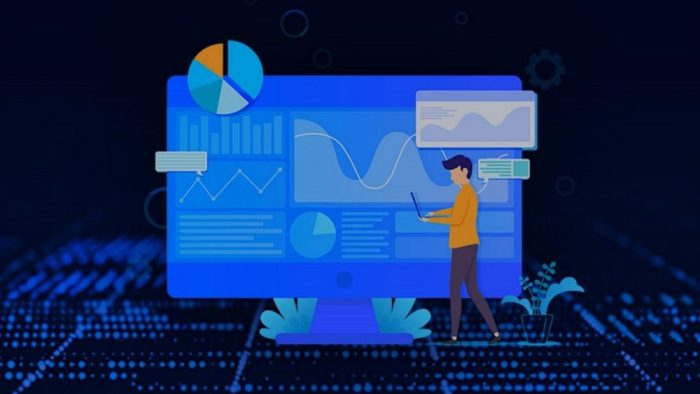
The field of big data is constantly evolving, driven by advancements in technology, the exponential growth of data, and the increasing demand for data-driven insights. This rapid evolution presents both challenges and opportunities, shaping the future of various industries and society as a whole.
The Rise of Edge Computing and the Internet of Things (IoT)
The increasing adoption of IoT devices and the rise of edge computing are transforming the way data is collected, processed, and analyzed. Edge computing allows data to be processed closer to its source, reducing latency and enabling real-time decision-making. This trend is particularly relevant for industries like manufacturing, healthcare, and transportation, where data needs to be analyzed and acted upon quickly.
- Real-time insights:Edge computing enables real-time analysis of data generated by IoT devices, providing valuable insights for optimizing processes and improving efficiency.
- Reduced latency:By processing data closer to its source, edge computing minimizes latency, which is crucial for applications requiring real-time responses, such as autonomous vehicles and industrial automation.
- Enhanced security:Edge computing can enhance data security by reducing the amount of data that needs to be transmitted to centralized data centers, making it less vulnerable to cyberattacks.
The Growing Importance of Data Governance and Privacy
As the volume and sensitivity of data continue to grow, data governance and privacy are becoming increasingly important. Organizations need to ensure that they are collecting, storing, and using data ethically and responsibly.
- Data privacy regulations:Regulations like the General Data Protection Regulation (GDPR) and the California Consumer Privacy Act (CCPA) are driving organizations to adopt stricter data governance policies and practices.
- Data security and compliance:Organizations need to implement robust data security measures to protect sensitive data from unauthorized access, breaches, and other threats.
- Data transparency and accountability:Organizations need to be transparent about how they collect, use, and share data, and they need to be accountable for their data practices.
The Advancements in Artificial Intelligence (AI) and Machine Learning (ML)
AI and ML are playing a crucial role in driving innovation in the field of big data. These technologies are enabling organizations to analyze data more effectively, extract valuable insights, and automate decision-making processes.
- Predictive analytics:AI and ML algorithms can analyze historical data to identify patterns and trends, enabling organizations to make more accurate predictions about future events.
- Automated decision-making:AI and ML can automate decision-making processes, freeing up human resources to focus on more strategic tasks.
- Personalized experiences:AI and ML can be used to personalize customer experiences, providing tailored recommendations and services based on individual preferences.
The Increasing Use of Big Data in Emerging Technologies
Big data is playing a critical role in the development and adoption of emerging technologies such as blockchain, quantum computing, and virtual reality.
- Blockchain:Big data analytics can be used to analyze blockchain transactions, identify patterns, and detect fraudulent activities.
- Quantum computing:Quantum computing has the potential to revolutionize big data analytics by enabling faster and more efficient processing of massive datasets.
- Virtual reality (VR):Big data can be used to create immersive VR experiences, providing users with more realistic and engaging simulations.
The Impact of Big Data on Society
Big data is having a profound impact on society, influencing everything from healthcare to education to transportation.
- Personalized healthcare:Big data analytics can be used to personalize healthcare treatments, enabling doctors to make more informed decisions based on individual patient data.
- Smart cities:Big data can be used to optimize traffic flow, manage energy consumption, and improve public safety in smart cities.
- Education:Big data can be used to personalize learning experiences, track student progress, and identify areas for improvement.
The Future of Big Data Analytics
The future of big data analytics is likely to be characterized by a growing focus on data-driven decision-making, the adoption of new technologies, and the increasing importance of data ethics and privacy.
- Data-driven decision-making:Organizations will increasingly rely on big data analytics to make informed decisions across all aspects of their operations.
- Cloud computing:Cloud computing will continue to play a crucial role in big data analytics, providing organizations with the scalability and flexibility they need to manage massive datasets.
- Data ethics and privacy:As the use of big data becomes more widespread, organizations will need to prioritize data ethics and privacy, ensuring that data is collected, used, and shared responsibly.



